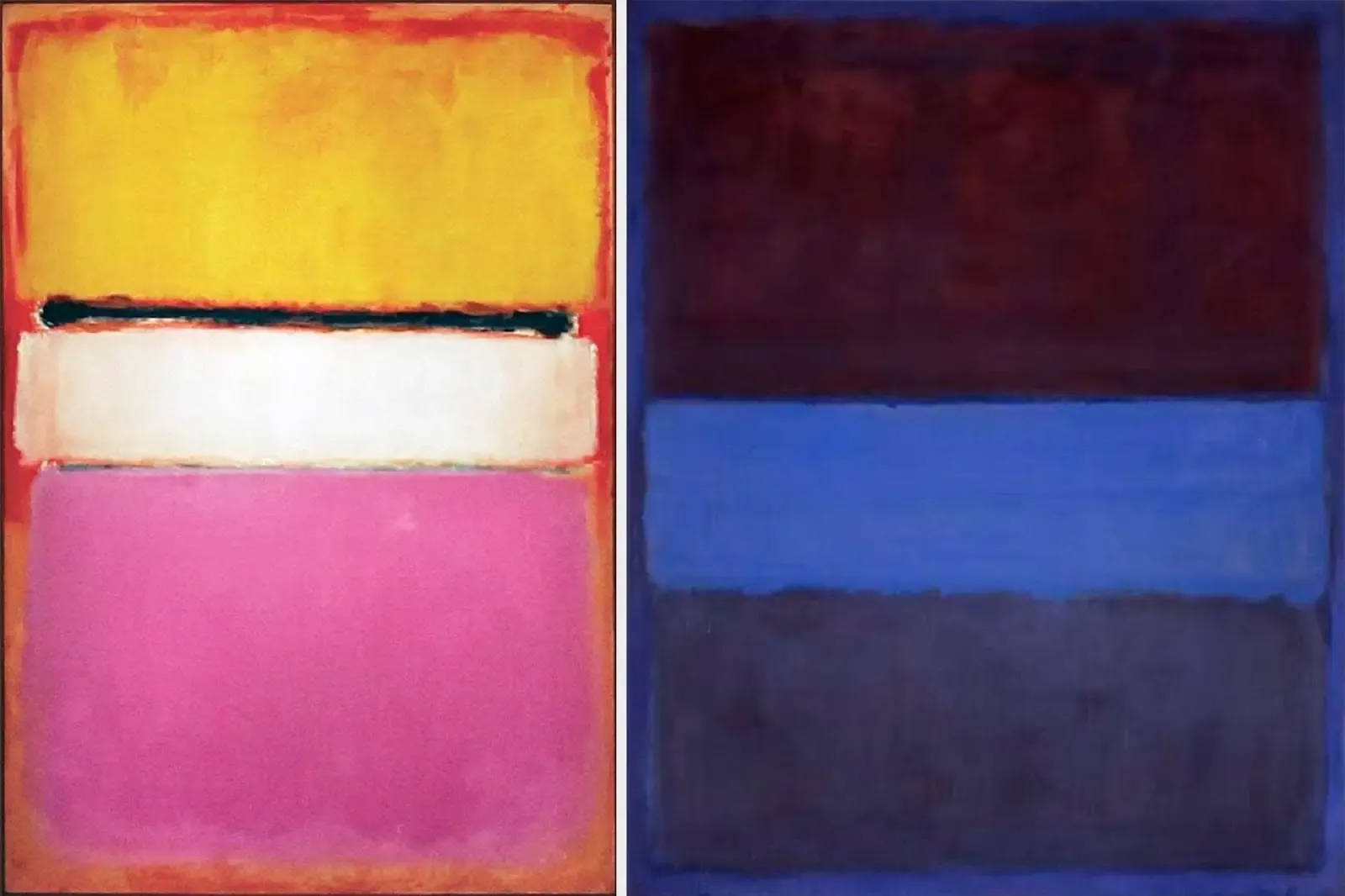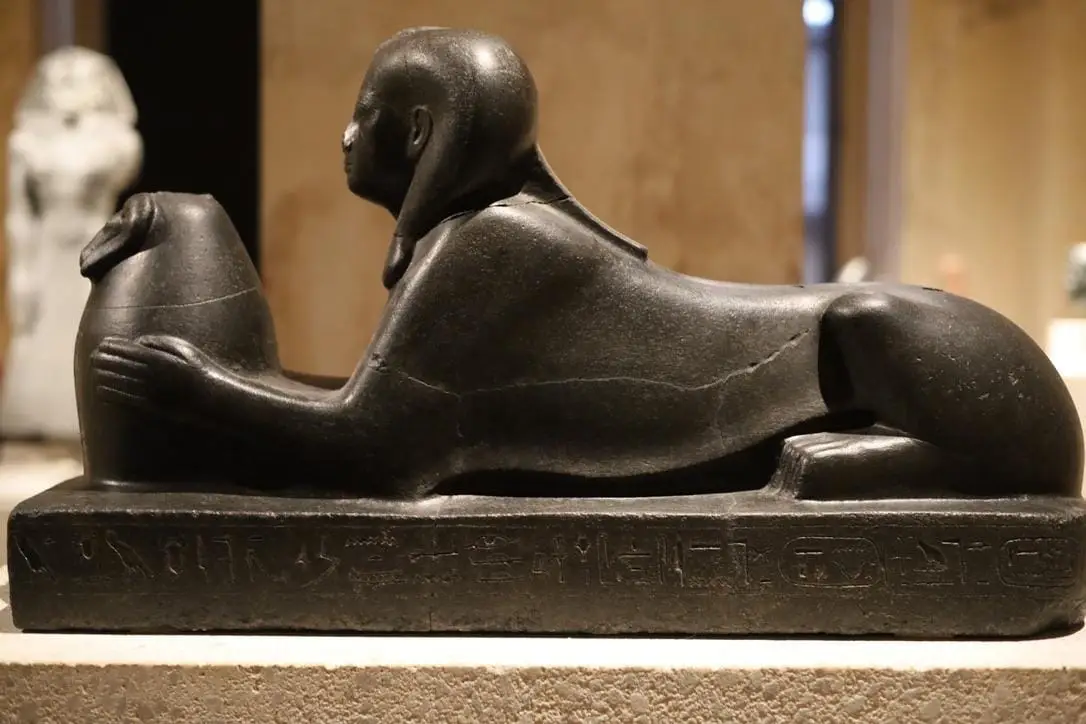Expressionism vs. Impressionism: Understanding the Differences
Impressionism is one of the most popular artistic movements of all times. Impressionists marked an essential break in the history of art as they decided to divert away from academic painting, thereby paving the way for modern painting.
Expressionism followed impressionism and broke up for good with the traditional artistic techniques that were prevalent at the time. The works that had been created during this period were considered revolutionary for their time, and remain amongst the most inspiring works of art today.
Both Impressionism and Expressionism had a tremendous impact on Western art, but you might ask yourself: impressionism vs expressionism, what exactly is the difference between the two? This is an excellent question, to which we will provide an answer below.
Historical Context of Impressionism
Overview
Impressionism was born during the second half of the 19th century in France. The political context at the time was characterized by a lot of turmoil. Indeed, France and Prussia went into war in 1870. Unprepared and outnumbered by the Prussian army, the French army quickly surrendered. This defeat led to the fall and exile of Napoleon III and the establishment of the Third Republic.
During the 1870s, this republican regime had to contend with several attempts to restore the monarchy, and remained conservative. It was not until the 1880s that the major republican laws passed, thereby bringing a wind of freedom to French society.
It was against this backdrop of conservatism, therefore, that a group of artists, all friends, rallied. The group included Degas, Sisley, Renoir, Pissaro, Bazille, Caillebotte among others and of course Monet. Initially, their artistic movement did not have any name, and even though the movement was not yet structured, these young artists all shared a common desire to break away from the academic, smooth, and rigid painting of their time.
Another common ground they all shared was that most of their canvases were rejected from the official artistic track, which is what led them to organise their own exhibition. The latter was held on April 15, 1874 and showcased the works of 29 artists. It is on the back of this exhibition that the term “Impressionism” first appeared. Indeed, the art critique Louis Leroy published a satirical article titled 'The Exhibition of the Impressionists’ in the newspaper 'Le Charivari'. In the article, Leroy described his visit to the exhibition and mentioned Monet’s famous painting 'Impression, Sunrise.' It is the title of this painting, which depicts the sunrise over the harbour of French city Le Havre, that inspired Leroy to use this term. Subsequently, a total of eight exhibitions were organized on a regular basis until the members of the group split up.
Key Characteristics
In the early 1860s, classical academic painters were used to paint biblical, historical or literary scenes. Landscape painting was still considered by the French Royal Academy of Painting and Sculpture to be of lower value than historical scenes painting. When they included landscape in their works, academic painters represented a rather lyrical and idealised vision of nature.
By contrast, impressionists tackled more trivial scenes of everyday life including beach, train station, street and house keeping scenes. Furthermore, they broke away from the academic vision of landscape : they no longer try to sublimate nature but just paint what they see.
They painted what they saw, but their practice encompassed much more. Indeed, rather than merely attempting to capture reality on canvas with photographic precision, they sought to convey the fleeting and ephemeral impressions evoked by their observation of the scenes. This involved a deep attention to the changing effects of light and atmosphere, and a desire to express the subtle, ever-changing dynamics of their surroundings.
To do so, they adopted several innovative techniques. First of all, by contrast to the traditional painters of the French Royal Academy, they often painted outdoors instead of in their ateliers to seize natural light and changing atmospheric conditions. This allowed them to represent light effects and colors in a more immediate and realistic manner. Still unlike academic painters, they left their brushstrokes visible, which gave a particular texture and liveliness to their works. They also used pure and vibrant colors, often straight from the tube, applied side by side on the canvas so that the viewer's eye would optically blend them.
Impressionists were particularly interested in representing the interplay of light and shadow, painting at different times of the day to capture the light variations, which made their scenes more dynamic and lively. They often used open and asymmetrical compositions, breaking away from the strict rules of classical composition, to achieve a more spontaneous and natural appearance. Furthermore, they also tried to capture fleeting moments and movements, such as the wind in the trees or the reflections of the sun on water. Finally, several Impressionnists used the aerial perspective to create a sense of depth and space, playing with variations in color and brightness to suggest distance and atmosphere. They used all of these techniques to try to grasp and emphasize the ephemeral and dynamic qualities of life itself.
Notable Artists and Works
The most famous painting from the Impressionist movement is the ‘Impression, Sunrise’ by Claude Monet mentioned above, held at the Musée Marmottan in Paris and which was presented at the first Impressionist exhibition in 1874. Another famous painting from this movement is Pierre-Auguste Renoir’s Dance at Le Moulin de la Galette, painted in 1876 and which represents a Sunday afternoon popular scene in Montmartre. The series of Edgar Degas’ ballet paintings showing backstage scenes of the Paris Opéra have also received worldwide recognition. The most famous one being ‘Ballet (L’Etoile)’ painted by Degas approximately between 1876-1877.
Historical Context of Expressionism
Overview
Expressionism emerged in the early 20th century in Western Europe, in Germany, in particular. The artistic movement did not only apply to painting but also literature, cinema, music and theatre for instance. During the second world war, the movement was condemned and considered as “degenerative” by the Nazis.
Expressionists sought to project a subjective view that tended to distort reality in order to convey an emotional reaction to the viewer. The distorted visions represented in their paintings were a reflection of the cynical and pessimistic view that the Expressionists had of their time. Indeed, the movement emerged before the beginning of the first world war, in the backdrop of social and spiritual crisis in Germany, as the country abruptly began its industrialization. Expressionist works often feature symbols, influenced by the emerging field of psychoanalysis and the explorations of Symbolism.
Key Characteristics
The Expressionists used several different techniques to express their emotions and their subjective visions of the world. Indeed, they often chose vivid and contrasting colors to evoke intense emotions. For that purpose, they were primarily interested in the emotional impact of the colors rather than their ability to be realistic. They did not hesitate to distort, deform and exaggerate forms, faces, landscapes among other elements, to express emotions and subjective ideas.
Most Expressionist works included vigorous and expressive brushstrokes, very visible and dynamic. They also often used thick and irregular lines to further add expression to the forms and create dynamic movement. Besides, they did not hesitate to mix different techniques and materials, including oil paint, watercolor, pastel, and even collaged or sculpted elements, to achieve their desired effect. Finally, they also typically included meaningful symbols to convey specific messages and emotions.
The most popular themes that Expressionists liked to tackle were the themes that had not really been tackled previously because deemed as “taboo” or not to be discussed, for instance : death, loneliness, spirituality and artists’ inner conflicts and tensions. Primitive and non-Western art acted as a major source of inspiration for the Expressionists who deemed that their art was more authentic and expressive.
Notable Artists and Works
Edvard Munch is undeniably the most popular Expressionist artist. Indeed, his famous work ‘The Scream’, which he painted in 1893 is an iconic work that represents the anxiety prevalent at the time. The movement also included the works of Ernst Ludwig Kirchner such as ‘Street, Dresden’ painted in 1908 as well as all of his portrait series including ‘Self-Portrait as a Soldier’ (1915), which represents the trauma experienced by the artist during the first world war. Kirchner believed that artists should not impose rules on themselves, and that inspiration had to flow freely, giving immediate expression to the artist's emotional pressures. Franz Marc is another notable name of the movement with his famous series ‘Blue Horses’. Finally, Wassily Kandinsky is one of the most important figure in the history of Expressionism. Throughout his career, he created several paintings that received worldwide recognition, including ‘The Blue Rider’ (1903), an energetic and dynamic work, which exemplifies the abstract painter's early exploration with color and form; and ‘Composition VII’ (1913), considered as the artist's ultimate masterpiece from the pre-World War I period.
Expressionism vs. Impressionism: Key Differences
Now that we have provided a detailed description of both artistic movements, let’s take a side-by-side look at Expressionism vs Impressionism, and the main differences between the two movements.
Technique, brushwork and color
Whilst it is true that both Expressionist and Impressionist artists both used vibrant colors in their paintings, the techniques employed differed in terms of their objectives.
Indeed, on the one hand, Impressionist painters aimed primarily to capture and reproduce the effects of natural light and changing atmospheric conditions. To achieve this, they often left their brushstrokes visible and used pure colors, applied side by side so that the viewer's eye would optically blend them.
On the other hand, the Expressionists were mostly interested in expressing and conveying emotions and their subjective visions of the world that surrounded them. They were not concerned with representing the world realistically but instead did not hesitate to distort and exaggerate reality to achieve their desired expression.
To do this, they also used vibrant colors, but in a more contrasted manner, using lines to define forms and create some movement. Their brushstrokes were bold, dynamic, and very expressive, adding an emotional character to the work. Furthermore, they did not hesitate to add symbols evoking specific messages and to use different techniques and materials to achieve the desired effect.
Themes and subjects
Expressionism and Impressionism also differ in terms of the themes and subjects that artists choose to portray in their works.
Indeed, the Impressionists were largely focused on the representation of everyday life scenes, nature and ordinary people. Monet for instance, devoted a whole series on the Paris Saint-Lazare train station in 1876. ‘The Ironers’ (1884-1886) by Edgar Degas is another example of painting that shows a trivial housekeeping scene.
On the other hand, the Expressionists explored their inner world and feelings and tried to portray them on canvas. In a certain manner, the canvas and artistic practice was used as a catharsis for their emotional baggage. The subjects and forms portrayed in their paintings are most of the time distorted or abstract.
Famous Paintings to Compare Expressionism and Impressionism
Let’s now try to have a closer look at examples of paintings from both Impressionism and Expressionism artists.
If we take a look at the most famous paintings of each movement : Impression, Sunrise by Monet (Impressionism) vs. The Scream by Munch (Expressionism); we can clearly see the difference in brush strokes. In his painting, Monet depicts Le Havre’s harbour in the morning mist. He displayed his colored brush strokes side by side, recreating the effect and impression of the lapping of the water, the light mist, as well as the reflection of the sun on the water surface. All of these elements put together bring an ephemeral and changeable impression to the painting. It is this dynamism of the scene that the painter strived to seize. By contrast, Edvard Munch used bold lines as well as vivid and contrasting colors to accentuate the sentiment of anxiety felt by the character, who is explicitly screaming, as shown by his distorted and exaggerated open mouth and hands. In the background, the distorted sky adds to the somber tone of the painting and the two figures, walking away from the central figure, enhance the sense of isolation and detachment. With these techniques, Munch is trying to transmit the feeling of anxiety felt by the central figure to the viewer.
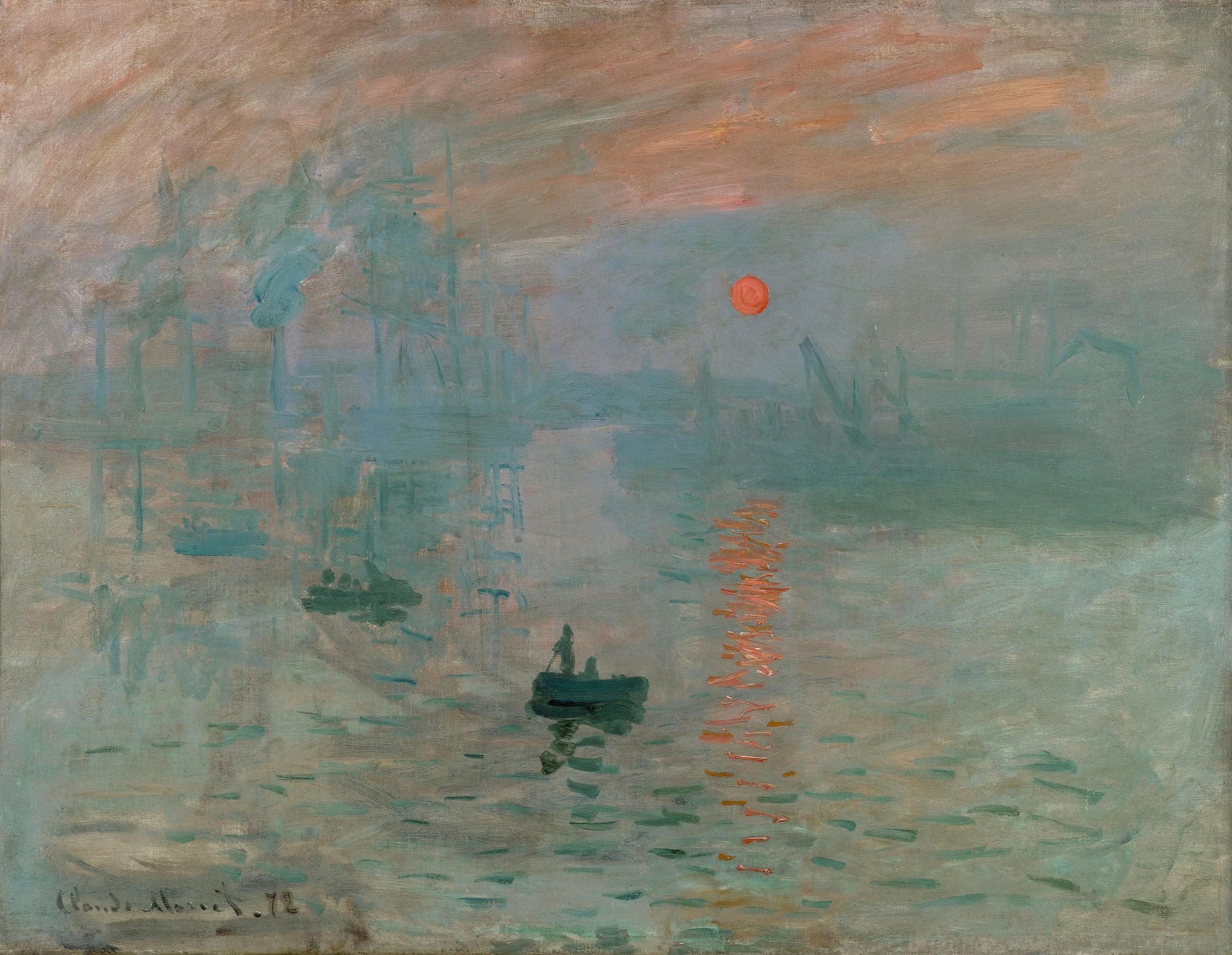
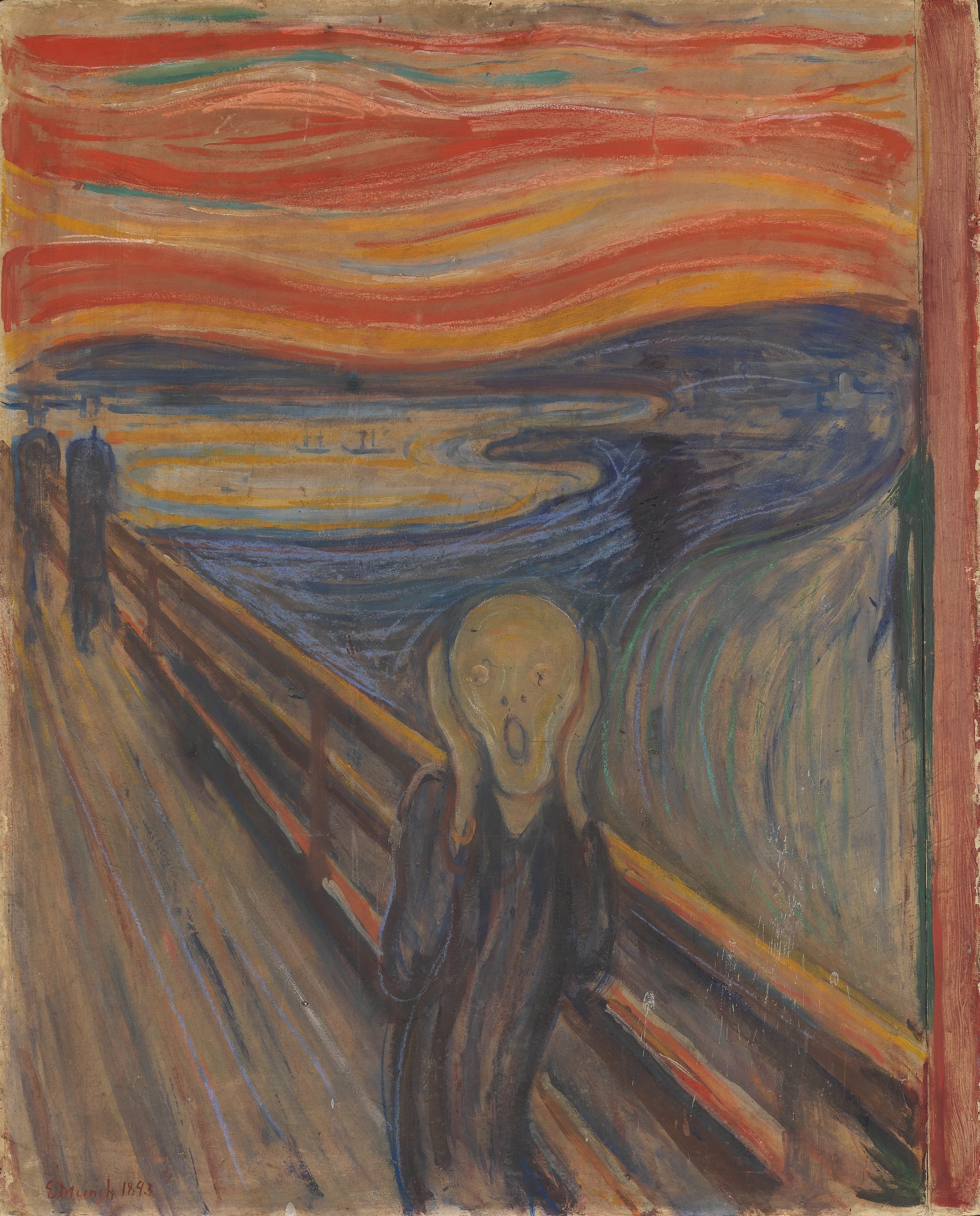
Impression, Sunrise by Monet (Impressionism) vs. The Scream by Munch (Expressionism)
If we take a look at two other paintings: Water Lilies by Monet vs. Composition VII by Kandinsky, it is clear that the subject matters are very different. Indeed, Monet’s Water Lilies stands just like an ode to the nature that surrounded him in his garden at Giverny, while Kandinsky’s Composition VII does not include any figurative element, is purely abstract, focusing instead on emotional and spiritual elements. Monet focuses on the subtle, gentle and naturalistic effects of color and light, trying to replicate the flow of the lilies in the water while Kandinsky uses bold, contrasting and vivid colors with dynamic brushstrokes to express intense emotions. As was common in Impressionist paintings, the composition of the Water Lilies is decentralized, yet harmonious. By contrast, Kandinsky's composition is chaotic and very intense, reflecting his inner turmoil.
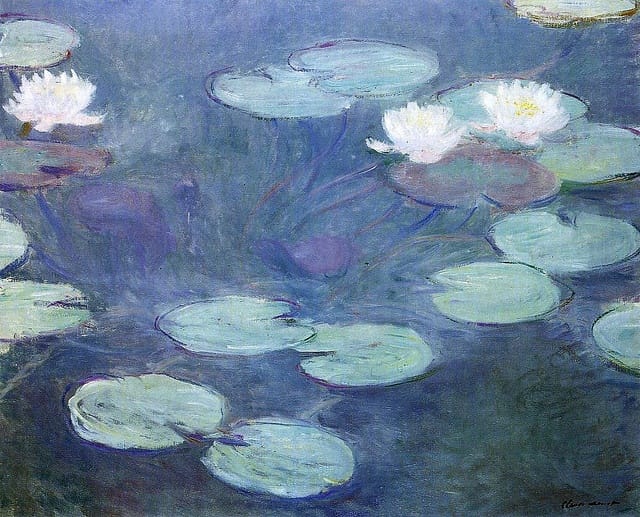
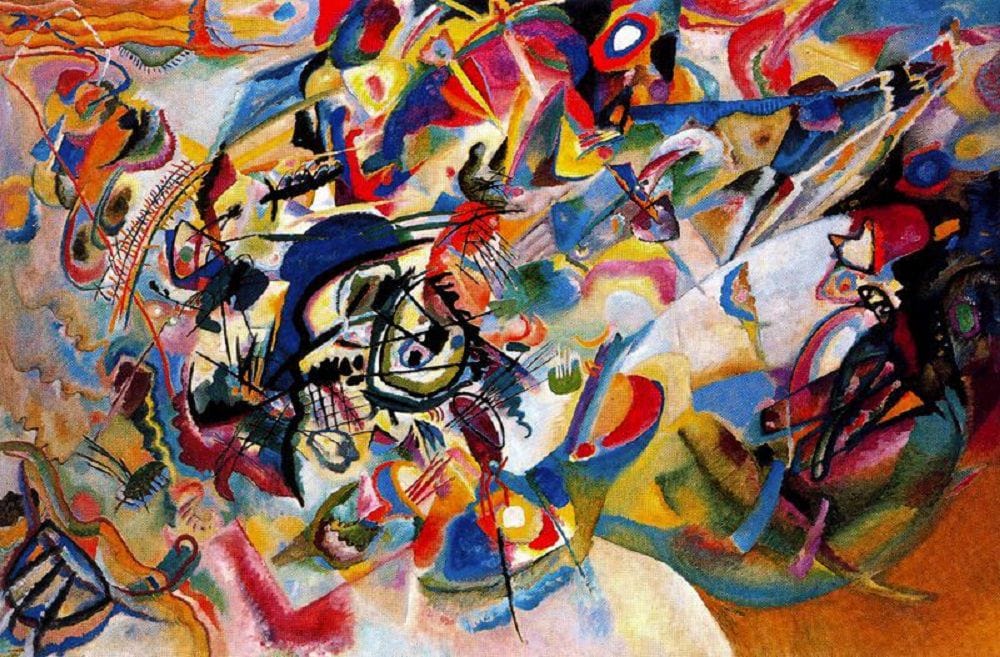
Water Lilies by Monet (Impressionism) vs. Composition VII by Kandinsky (Expressionism)
Let us look at a final example showing the difference between the two artistic movements : Woman with a Parasol by Monet vs. Self-Portrait as a Soldier by Kirchner. While both paintings represent figures of ‘everyday life’, the woman represented in Monet’s painting evokes a moment of beauty and connection to nature while Kirchner depicts a vision of himself deeply impacted by his inner turmoil and conveying a feeling of alarm and vulnerability. The same difference in brushwork applies here as Monet uses smooth, subtle, side by side brushtrokes that creates an effect of delicacy while Kirchner uses vivid, contrasting colors with dynamic brush strokes to increase the intensity stemming from the painting and to highlight the emotional state of the painter.
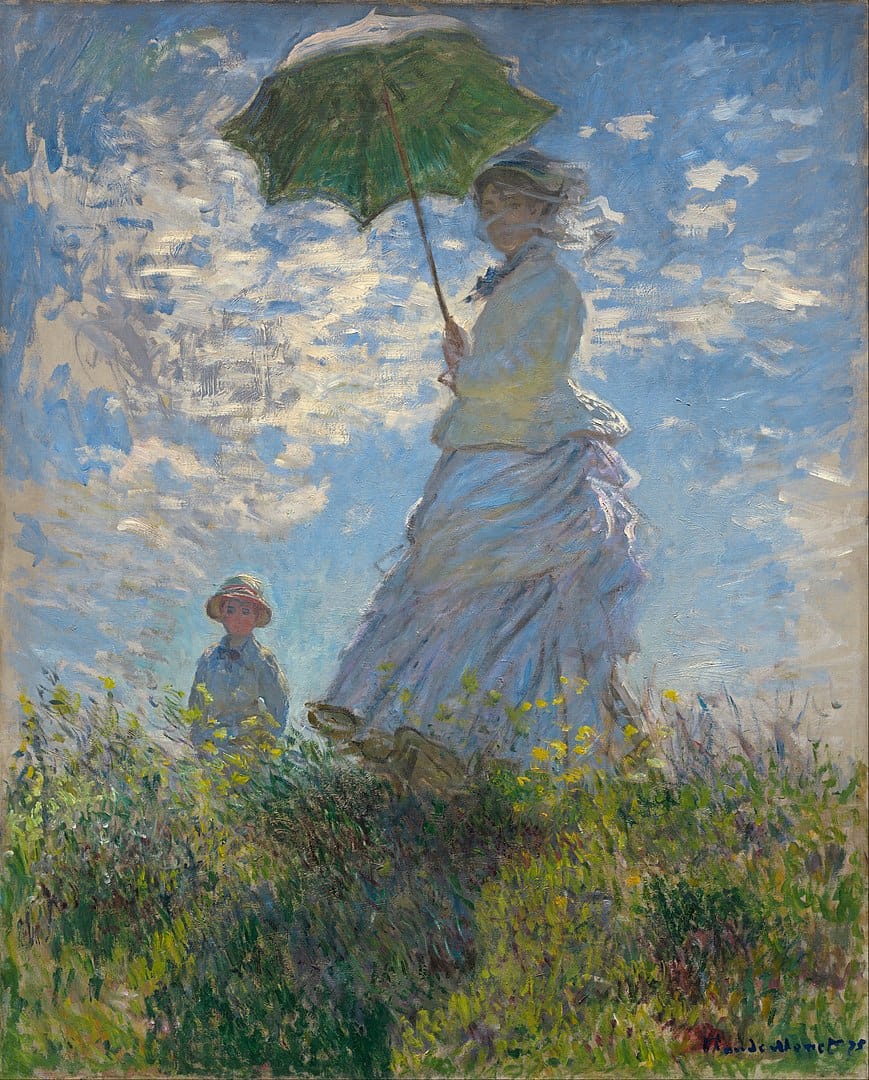
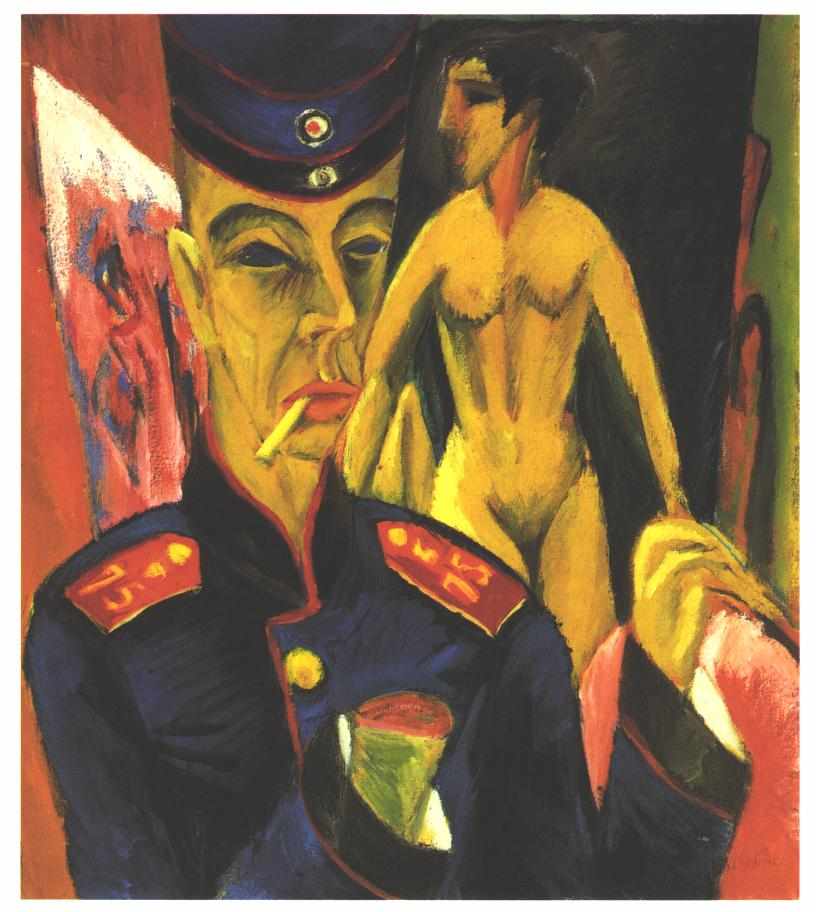
Woman with a Parasol by Monet (Impressionism) vs. Self-Portrait as a Soldier by Kirchner (Expressionism)
The Influence of Expressionism and Impressionism on Modern Art
Both Expressionism and Impressionism had a profound impact on Modern Art.
Indeed, Impressionism revolutionised the art world by breaking away from traditional academic painting techniques and paved the way for Post-Impressionism. Artists such as Paul Cézanne, Vincent van Gogh, and Paul Gauguin largely inspired themselves from the Impressionist techniques, to which they added their own unique styles and interpretations. In the Post-Impressionist era, artists sought to explore more personal and symbolic expressions, often using bolder colors and more defined forms than their Impressionist predecessors.
With regards to Expressionism, its emphasis on emotional expression and subjective interpretation laid the groundwork for subsequent abstract and modern art movements. Typically, Kandinsky and Marc paved the way for abstract expressionism, where the focus shifted entirely to the emotional and psychological aspects of art. In light of this, they inspired artists such as Jackson Pollock and Mark Rothko, which led to the development of abstract expressionism in the mid-20th century.
Conclusion
In conclusion, Impressionism and Expressionism differed not only in terms of technique used but also in terms of their primary objective as well as the themes and subjects represented in their works.
On the latter, Impressionist painters were primarily interested in capturing and reproducing the effects of natural light and changing atmospheric conditions, while Expressionists focused on expressing emotions and their subjective visions of the world, without any concern for realistic representation.
In terms of technique, on the one hand, Impressionists used pure and vibrant colors, with brush strokes applied side by side to allow the viewer's eye to optically blend them. On the other hand, Expressionists used vibrant colors in a more contrasted manner, employing lines with bold and dynamic brushstrokes. They also incorporated symbols and sometimes used various techniques and materials to achieve the desired effect.
Finally, the difference between Impressionism and Expressionism lies in their subject matters as well. Whilst Impressionists were largely focused on depicting everyday life scenes, nature, and ordinary people, Expressionists sought to explore, represent and convey emotional experiences.


